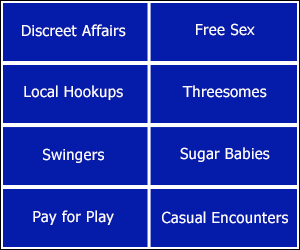-
Top-selling smartphone models from Apple, Samsung and Chinese tech companies are reaching the limits of impressing consumers based on new design elements.
-
The last significant and sustained change in the smartphone design era will be a truly foldable handset.
-
The 334.3 million units shipped during the first quarter of 2018 was a 2.9 percent decline year over year, according to IDC, and was led by China, which declined to a level not seen since 2013.
With few exceptions, top-selling smartphone models from Apple, Samsung, Huawei and the rest — a sea of rectangular slabs with rounded corners and maybe a bezel — lately have reached the limits when it comes to impressing consumers with new design elements to stand out.
Now they are all about the screen.
According to Brett Newman, co-founder of product design firm Daylight Design, the screen is "the point of interface, the centerpiece of the design." Most buyers just want a screen that's durable enough not to crack when dropped, coupled with two diametrically opposed design elements: a bigger, richer screen on which to consume media, but which also lays atop a smaller handset that fits within a palm or pocket. The latter problem is getting closer to being solved.
All the major smartphone makers are quietly working on foldable phones, devices that might use two or more bendable OLED panels that form a large screen when unfolded, according to recent reports. Huawei might have something to show us in October, Samsung's foldable Galaxy X is reportedly due for launch sometime in 2018 or 2019, and Apple's version could come as soon as 2020. Apple and Samsung declined to comment.
If these devices work well, look sleek and offer a user experience that's as rich or richer than what our iPhone X and Galaxy 8's provide, a flood of phones with 6-inch or 7-inch screens that scrunch down into 3.5- or 4-inch forms might have the potential to shake up the saturated smartphone sector.
"Foldable phones could be the future," Newman said. "But they need to meet the current standards of performance and specifications and be foldable to be widely accepted. If they do both, there is a chance for a significant, sustained meaningful change in the market," he added.
There's no doubt that consumers and Wall Street would welcome the debut of a relevant, cutting-edge form factor in the global smartphone market, where shipments have waned due to fewer smartphone converts and fewer people willing to upgrade as often. According to IDC, vendors shipped 334.3 million units during the first quarter of 2018, a 2.9 percent decline over the prior year's first quarter. China drove the decline, where shipment volumes dipped below 100 million — a low not seen since late 2013.
"The abundance of ultra-high-end flagships with big price tags released over the past 12 to 18 months has most likely halted the upgrade cycle in the near term," IDC said in its most recent Worldwide Quarterly Mobile Phone Tracker. "It now looks as if consumers are not willing to shell out this kind of money for a new device that brings minimal upgrades over their current device."
A foldable phone powered by technology that delights users might tip the scales up — at least a bit.
"You only have to look at the other core electronic devices with screens — computers, TVs, tablets — to know that once you get saturation, there is never going to be this huge explosion of demand for these products," said Stephen Baker, v.p. and industry advisor for technology and mobile at market research firm NPD Group. "[Foldable phones] will be great, awesome products, but I'm sure it will be a slow burn in terms of both the interest level and people's acceptance. But this is the kind of stuff you do as a consumer electronics company — you advance the product."
There have been a handful of dual-screened, hinged phones released over the past decade, but all have sacrificed too many features to be up to snuff to their one-interface counterparts. ZTE's Axon M, introduced in October, got the market a little closer with its two 5.2-inch LCD screens that form a 6.75-inch tablet when opened.
The ZTE Axon M is not a true flexible phone — the second screen slides out from the back and is attached with a bulky hinge. And with a price tag of $725, a few shortcomings won't help convince consumers: its displays are lower resolution than most 2017 phones, while the life of its battery, which must power two screens, is expected to be significantly shorter. ZTE also is currently in a fight for its life as the U.S.-China trade war evolves, with a proposed U.S. ban on its use of American technology components posing an existential threat.
The biggest design challenge with foldable smartphones is with screens, which like on all high-end models, are made up of various layers of glass and/or polymer films.
"Developing any glass to bend at a tight radius hundreds of thousands of times without significant damage, and while maintaining outstanding optical properties, is a challenge," said a Corning spokeswoman. Challenges also exist within the foldable device. The display panel and electrodes, for example, must all meet the same bendability requirements, without compromising display quality, while the bend hinge should not show signs of creasing.
"The key is, how good is that display going to be?" said Wai-Loong Lim, co-founder of R&D consultancy Y Studios. "To fold in the middle, to crease it in the middle, is it going to provide the rich visual experience — the depth, the immersion — that we want?"


the next big thing needs to be a battery that lasts a whole waking day without recharging!